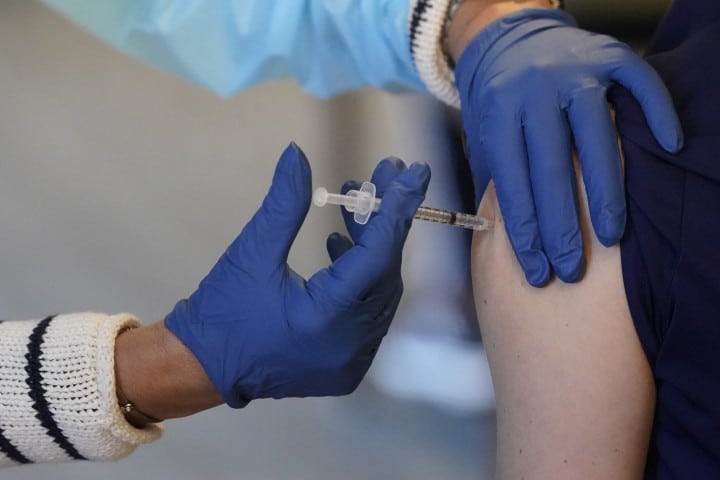‘Supply and risk’ determine rollout of COVID-19 vaccine in Hamilton
Published January 11, 2021 at 2:59 pm

As Hamilton’s COVID-19 vaccine rollout gets underway, the city’s Board of Health was given an update from Public Health officials on Monday (Jan. 11) on what the rollout will look like in the months ahead.
On Sunday, the Pfizer vaccine started being administered to residents of the City’s long-term care facilities with the goal of having most if not all staff, residents and their designated primary caregivers in these settings inoculated with their first dose by next Monday (Jan. 18).
This is a key component of Phase 1 of Hamilton’s vaccine rollout that will also see front-line health-care workers, First Nations communities and urban Indigenous residents, as well as recipients of chronic home health care, receive their doses of the vaccine.
This first phase is expected to last until March where rollout moves into Phase 2.
“This is a very dynamic situation with short planning cycles,” said Hamilton Public Health Services’ (PHS) Chief Medical Officer of Health, Dr. Elizabeth Richardson.
As of Sunday, 5,800 vaccines have been administered and some individuals will start getting their second dose this week.
The sequencing and timing of the vaccine’s rollout are determined by provincial authorities.
“[How we proceed] depends on risk and supply,” Richardson explained to the Board. “Where there’s greater risk of spread, it’s prioritized.”
Richardson said they expect a shipment of the Moderna vaccine in Hamilton sometime this week, but the supply of the vaccines is limited for the time being which is why prioritizing those more high-risk settings is important in these early stages of the rollout.
Phase 2 of vaccinations will prioritize people over the age of 70 and other congregate settings, like shelters, as well as those who in Phase 1 did not receive their shot. This phase is expected to happen from April to September.
It’s expected that the vaccine supply will get a much-needed boost in the springtime, especially if the AstraZeneca vaccine is approved in the meantime.
Phase 3, which is expected to happen in late 2021, will see vaccines become widely available.

Both Pfizer and Moderna’s vaccine require two doses, which have to be given within several weeks of each other. Reports suggest that the AstraZeneca vaccine will also be administered in two doses.
While many on the Board of Health hailed the rollout in earnest of the vaccine in Hamilton’s long-term care and retirement settings as a sign of hope, Mayor Fred Eisenberger warned residents that they will need to remain patient in the months to come.
“We’re going to have to ask residents to be patient in the context of the rising number of cases,” he said at Monday’s meeting.
As it stands, PHS resources are strained, particularly when it comes to contact tracing, Dr. Richardson told the Board.
Since September 1, the average number of new COVID-19 cases reported daily has risen from approximately 1 to 135, according to PHS data.
As of Monday, there were 1,490 active cases of the virus in the community (a total of 7,474 cases in Hamilton since the start of the pandemic).
There are currently more than 100 people with COVID-19 being cared for in Hamilton hospitals.
For more information on the City of Hamilton’s response to COVID-19 and the rollout of the vaccine, visit their website.
Monday’s public health presentation to the Board of Health can be found here.
insauga's Editorial Standards and Policies advertising





